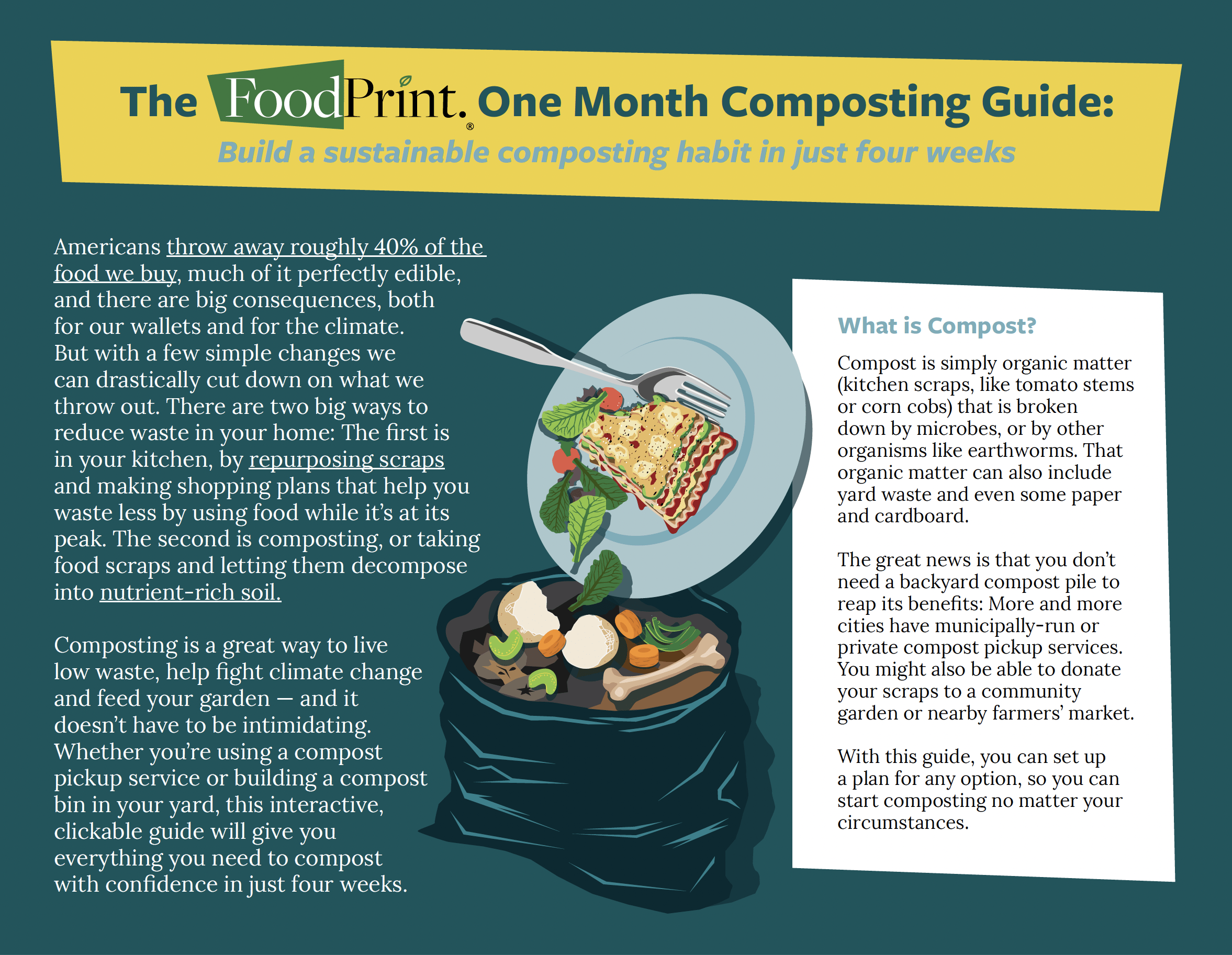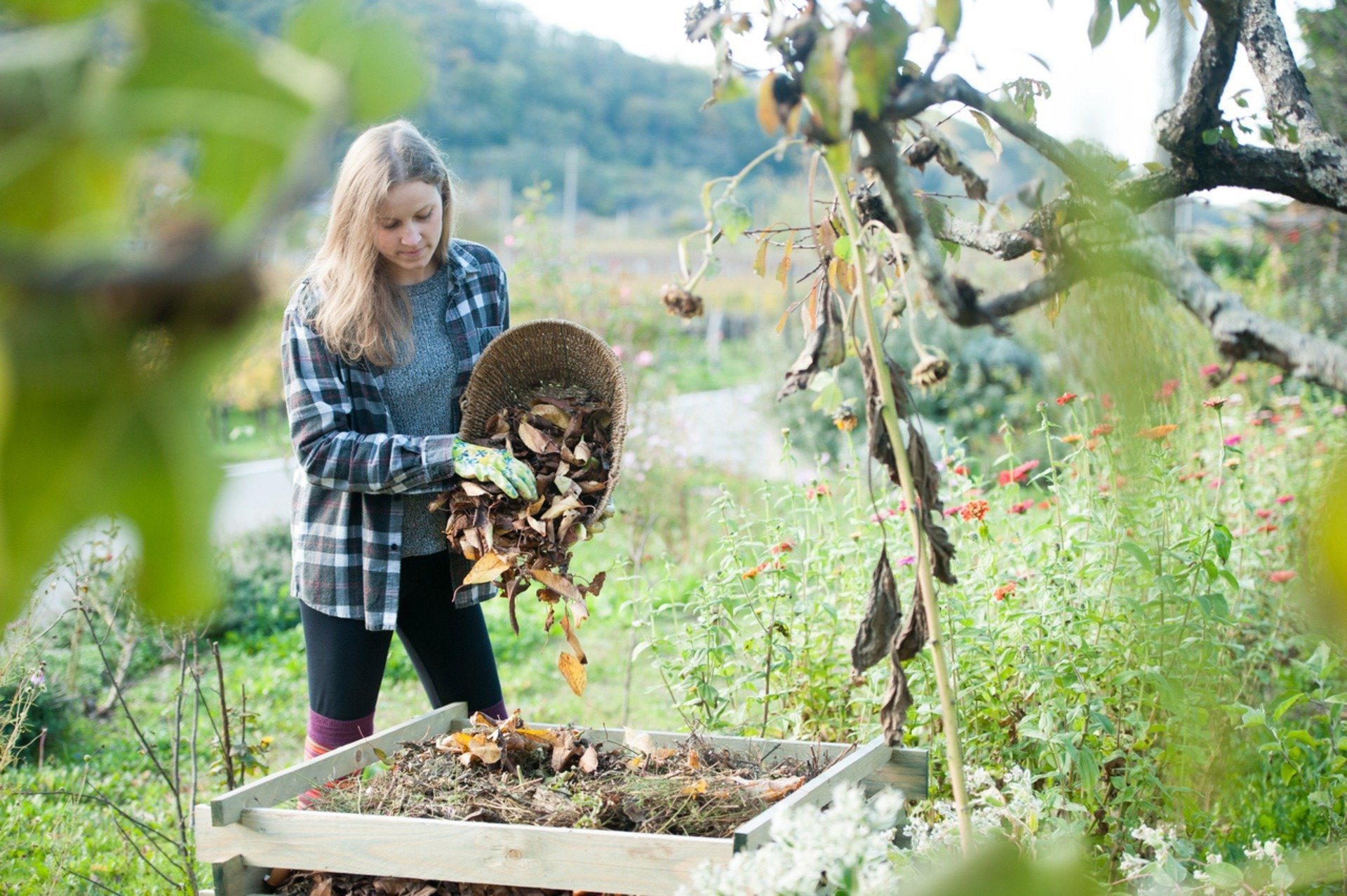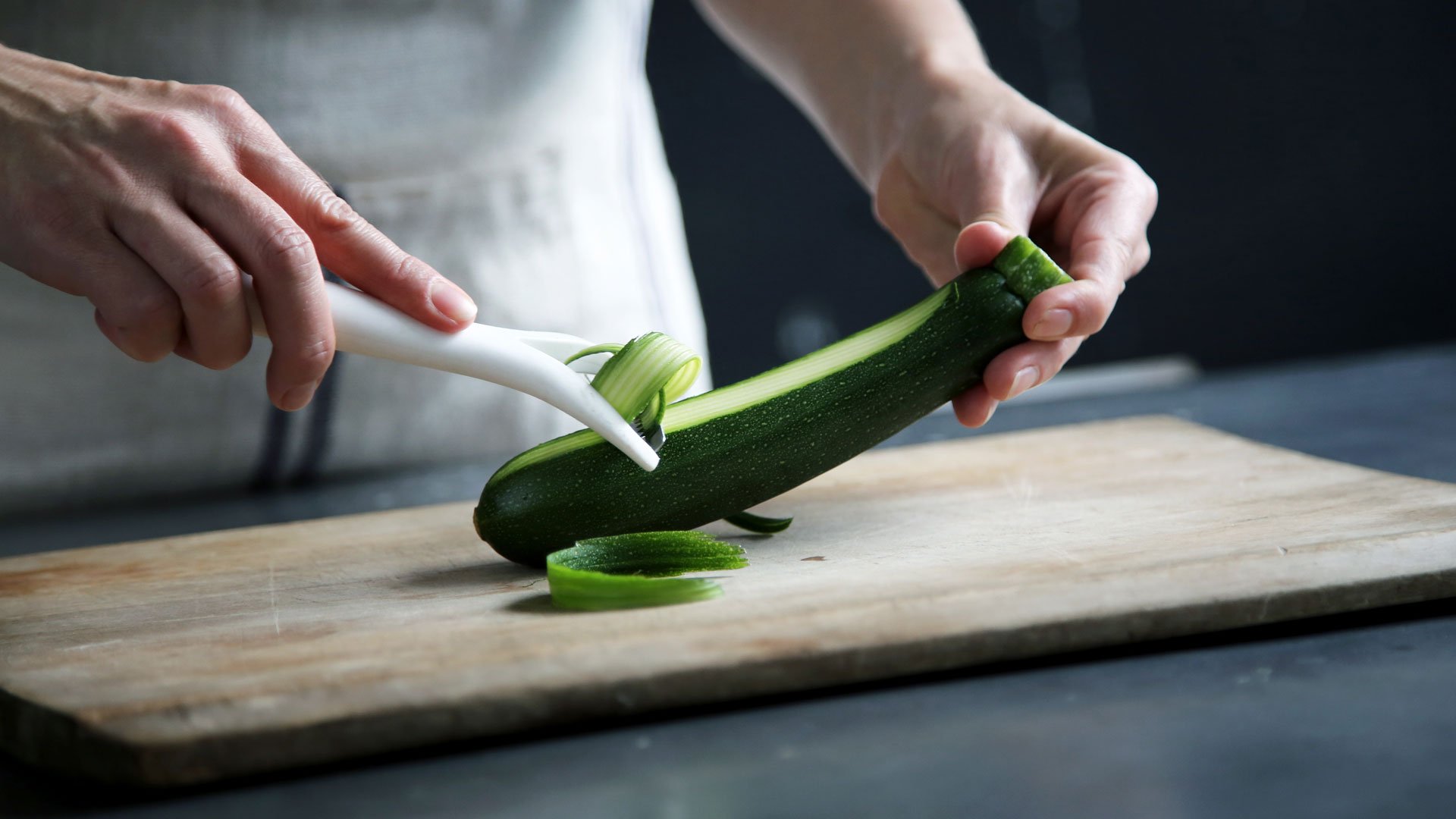Gardeners Share their Tips and Tricks for Composting at Home
Americans waste roughly 25% of the food we buy, and while there are many ways to reduce waste in your kitchen, you may have extra kitchen scraps, yard waste, or uncoated paper and cardboard. Composting is a rewarding way to keep them out of the landfill and feed the soil at the same time. Read on for inspiration and ideas, and when you’re ready to get started, head to our 4-week composting challenge for a step-by-step guide to start composting, or using a pickup service.
Why Compost?
There are dozens of reasons why people compost. Atlanta-based builder and amateur gardener De’Von Dixon began composting about four years ago, hoping to cut down on food waste and enrich his garden soil.
PC Sweeney, a library professional and avid gardener, has been composting for three summers in his current home, but he’s no stranger to the process: Growing up on a farm, and spending time at the family’s nursery made him intimately familiar with compost’s many benefits. “We always had a compost pile somewhere growing up. I lived in apartments and on boats throughout my 20s and 30s, so when we bought our half acre house a few years ago, a compost bin was one of the first things we installed because I knew I’d be doing a lot of gardening.”
Once you start, you just might discover that your compost pile provides some unexpected benefits. Dr. Kathleen Kamerick, a retired university professor in Iowa, began composting as a way to process yard and food waste. Over time, she was surprised to see the compost transform her heavy, clay soil into something rich and nourishing. She notes that, “years ago, when I was trying to put some plants in the ground and hoping they wouldn’t die, I read a gardener who said that soil is everything. I didn’t understand that then, but now I do.”
Choose Your Compost Pile Setup
Whatever your reasons, your compost pile doesn’t have to be big or complicated to make an impact. Gardeners employ a variety of setups based on their gardening needs, the space they have, and how much food and yard waste they produce.
Dixon has a 2.5 foot tall bin, in which he layers green and brown scraps. To keep flies and animals away, he put a lid on top, but chose one that still allows for airflow and moisture control. Maintenance is easy, too: He just turns it with a rebar dowel and hoses it down when it’s dry.
Dr. Leni Sorensen, a renowned food historian and founder of Indigo House, has been composting for fifty years as a gardener and farmer. Her kitchen scraps make an extra stop in their journey to becoming compost, first going into the chicken coop. Then she composts the chickens’ litter, along with eggshells, which she stores separately, all of which is layered with yard waste. “That way I have no attractive nuisance that would bring raccoons, foxes, opossum, bear, rats on to the farm.” Another benefit to this setup is that it doesn’t require turning, and only occasionally requires watering. Each spring and fall she empties one side and starts anew while the other side finishes.
Sweeney uses a similar method, building a W-shaped bin out of old pallets. “There are two bins so that I can fill one with fresh yard trimmings, kitchen waste, etc. I let the other one decompose and then use it until it’s empty. Then I switch.”
For Kamerick, a simple compost pile, tucked against the back fence, is the easiest option, and one advantage to a big compost pile is that it can handle a lot of material, whether it’s big loads of leaves in the fall or grass clippings in the summer. For those looking to buy rather than build, there are plenty of options out there, from compost tumblers to worm composters to prefabricated outdoor bins.
Pay Attention to Weather Conditions
Compost care can vry depending on humidity, the season, and other factors, so learning best practices helps to ensure a successful compost pile. You may need to add water or adjust greens and browns to regulate the temperature. Your local extension office, gardening group, community garden or other resources can give you more information.
Dixon’s main concern in Georgia is the heat so he minimizes green scraps in summer to keep it from getting too warm. In winter, he mixes in additional coffee grounds, waters, and turns the pile more frequently to keep it toasty. Sweeney, who lives farther north, puts a big plastic sheet over his pile, which holds moisture in on hot summer days and holds in heat in the winter.
Collect Scraps to Minimize Outdoor Trips
Having a way to collect scraps indoors helps with habit building and reduces trips to the outdoor bin. Sorensen and Kamerick both keep small compost buckets on the counter, which they then empty periodically into their chicken pen and compost pile, respectively.
Dixon keeps a small brown paper bag near the back door for green scraps, dumping it every few days. At first he brought scraps out as he created them, but this led him to be inconsistent and to end up throwing scraps away. By having the bag at the ready, he’s able to reduce trips outside and maintain a consistent composting practice. Learning what works best for you, and making adjustments as you need, is a key to composting success.
Make Use of Compost Pickup Services
An outdoor compost bin may not be a feasible option for everyone, but that doesn’t mean you can’t compost your scraps. Compost pickup services collect your scraps and compost them, either returning the compost to you for use in your garden or donating it. Some community gardens and other organizations accept scraps for their piles, too. Atlanta-based chef Lori Clowers Horne uses Compost Now to pick up and donate food scraps from her downtown Atlanta loft. She’s proof that one home’s compost makes a big difference, noting, “I have diverted 1843 pounds of food waste and created 922 pounds of compost since September, 2019.”
Author K. A. Amienne, who writes under the pen name Anne Bramley, is an American expat who lives in the UK, where compost pickup is one of the city services at her Norwich home. Her family collects their scraps as they go and each week the service collects them from an outdoor bin. The city accepts all kinds of scraps, though she notes that “being England, I suspect our compost has a high percentage of teabags.” Many US municipalities offer compost pickup, too, including larger cities like San Francisco, CA and smaller towns like Boulder, CO. Like Amienne’s home, these cities offer a curbside bin that’s collected every week with solid waste pickup and recycling.
Jessamyn West is a Vermont-based rural librarian and technologist, who used to compost at home, but switched to a pickup service after repeated problems with bears. The program, like most pickup services, is simple: The pickup service leaves a large container which West fills with food scraps (but no meat or dairy). The service picks it up weekly and leaves an empty container, taking the scraps to feed pigs at a local farm.
Maintaining Your Compost Pile
Once you’ve decided where and how you want to compost, starting and maintaining your pile is easy. A bit of planning from the start can help turn your composting dreams into composting habits. Sorensen says, “place it in a convenient place in your garden — if it isn’t easy to get at and to use, you will not keep it up.”
Think about what critters might be interested in your compost, and what you can do to keep them away. West says “smelly compost piles don’t just attract bears, they can also bring in raccoons, skunks and other little beasties.” A smelly compost pile not only attracts unwanted guests, it also makes your yard a less welcoming place to be. Dixon notes that “it’s easy to control the smell/ temperature by capping the bin with brown materials,’ which Sweeney says also help with water retention and aerate the pile so beneficial microbes can thrive. While many home composters don’t add meat, things like crab shells, fish bones and egg shells can benefit your compost. Sweeney says “They all help add phosphorous and calcium to the beds to help prevent things like tomato end rot. So don’t be overly strict.”
He also notes that yard waste and kitchen vegetables can contain seeds that might sprout in your compost. His solution is a hot compost bin: “The high heat kills most seeds.”
Their biggest tip, though, is just to get started. Kamerick says, “read some advice for doing compost, and talk to a few people, and then figure out what looks like it will work for you. Don’t fuss about it too much.”
And Dixon urges: “Don’t overcomplicate composting and make it into an intimidating ordeal. Just start. Keep it simple and build easy to maintain habits. It’s gratifying when you get healthier plants, a better harvest, and less food waste going to the landfill.”
Get the latest food news, from FoodPrint.
By subscribing to communications from FoodPrint, you are agreeing to receive emails from us. We promise not to email you too often or sell your information.
Top photo by Grandbrothers/Adobe Stock.
More Reading
Can recycled soil blends support a more sustainable future?
September 5, 2025
How to make your kids’ school lunch more eco-friendly
August 19, 2025
Looking to jar up the season? Try a canning club
August 7, 2025
Gamify your family’s food waste reduction
June 30, 2025
Can food recyclers help us tackle household food waste?
June 18, 2025
Do organic waste bans and composting programs really take a bite out of food waste?
March 17, 2025
What is Europe getting right about food waste in schools?
November 15, 2024
Municipal composting has increased, but what does that really mean?
May 16, 2024
6 upcycled food trends to watch
February 13, 2024
Food scholar Darra Goldstein on the culinary history of preservation
October 30, 2023



